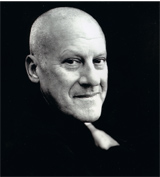Lord Foster on the Yacht Club de Monaco
The Yacht Club de Monaco Clubhouse, which opens next month, is the daring new silhouette on the Monaco skyline. Its architect, Lord Foster, tells Country Life about its design


The new building is obviously shaped like a liner, but can you describe the inspiration behind the design?
It's a yacht club so, symbolically, we felt that it should convey, through its architecture, the spirit of sailing. There are nautical references in the deck-like terraces, however, our inspiration was also the many different users of the Yacht Club. In a sense, the building was conceived as a city in miniature, nestled within the dense urban fabric of Monaco.
Like a city, the Yacht Club has schools, parks, offices, restaurants, a network of interior circulation ‘streets' and a hierarchy of public and private spaces. What are you looking forward to seeing? The members enjoying its spaces-inside and outside. It's also wonderful to see the first groups of children taking their sailing lessons in the new sailing-school facilities. Every Monégasque will take lessons in the building at some stage during their education.

Foster + Partners was appointed in 2003 and yet the construction started in 2009-why the delay?
During the design process, it emerged that there was an opportunity to create very valuable car-parking spaces underneath the neighbouring boulevard Louis II, which forms part of the annual Monaco Grand Prix circuit.
The decision to create this space meant that the process was prolonged. Monaco is very keen to promote its environmental image-how does the new building comply? We share the Principality's commitment to sustainability-this is integral to everything we do and has been since the inception of the practice in 1967. Monaco's sunshine is converted into energy by photovoltaic cells and solar thermal panels and we have taken advantage of the waterfront location by integrating sea-water cooling systems.
The design of these shading systems also celebrates the nautical heritage and traditions of the club-the intricate design of the brise-soleils was inspired by the imagery of yachts and, like a ship, the observation decks are shaded by retractable fabric screens supported by a mast and booms.
Exquisite houses, the beauty of Nature, and how to get the most from your life, straight to your inbox.
How do you marry the design of a building that is exclusive but has to function as a public space as well?
Rather than being inward-looking, our design is open and integrates the building into the wider urban context. The terraces are like the deck of a ship and step up along the harbour to offer views out to races at sea or inland over the Formula 1 Grand Prix circuit. The landscaped roof of the sailing school also complements the green spaces in this densely populated city and forms an important new link to the pedestrian route between the quayside and Place du Casino.
What do you feel is your Foster + Partners signature on this building?
If there is a theme that is common to the Yacht Club and our other projects, it is our concern to address the sense of a place-to add something to the community as well as being sensitive to issues of energy and the environment. We do not have a stylistic signature as such, as every project is unique, but a consistent philosophy, a set of values and an approach in which research is important.
Was there any difference between working in Monaco as opposed to London or New York?
Any new building must recognise and strengthen the culture of a place-its history, traditions and identity. Monaco is particularly interesting as an example of a successful high-density urban model-too often that high density is associated with poor quality of life. Monaco is the opposite and is an example of a sustainable compact, walkable city.
Had you spent much time in Monaco prior to working there?
I designed and created a home for our family quite close by in Cap Ferrat, also on the waterfront. So, yes, for several years, we were neighbours and would often frequent Monaco. Before and since that time, we have been regular visitors to the Principality.
How do you see the building sitting against its setting in 50 years?
My family's motto is ‘the only constant is change', so it is inevitable that the context will change. However, it will remain a symbol of its time-a civic landmark that we are proud to be associated with. The project was also an opportunity to celebrate the Principality's timeless connection with the Mediterranean-and that will be a constant also.
* Follow Country Life magazine on Twitter
